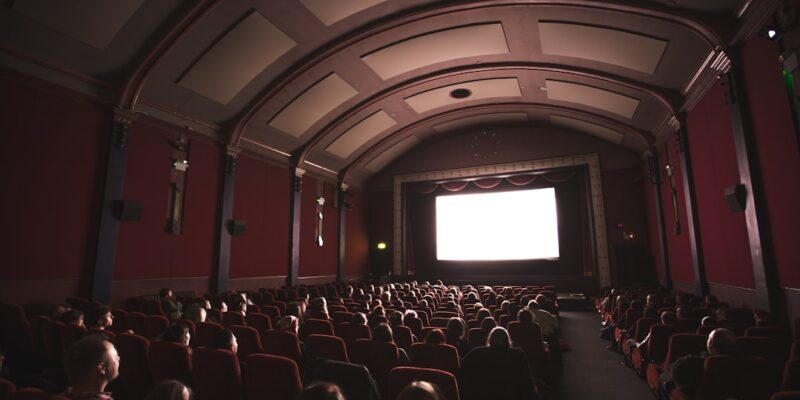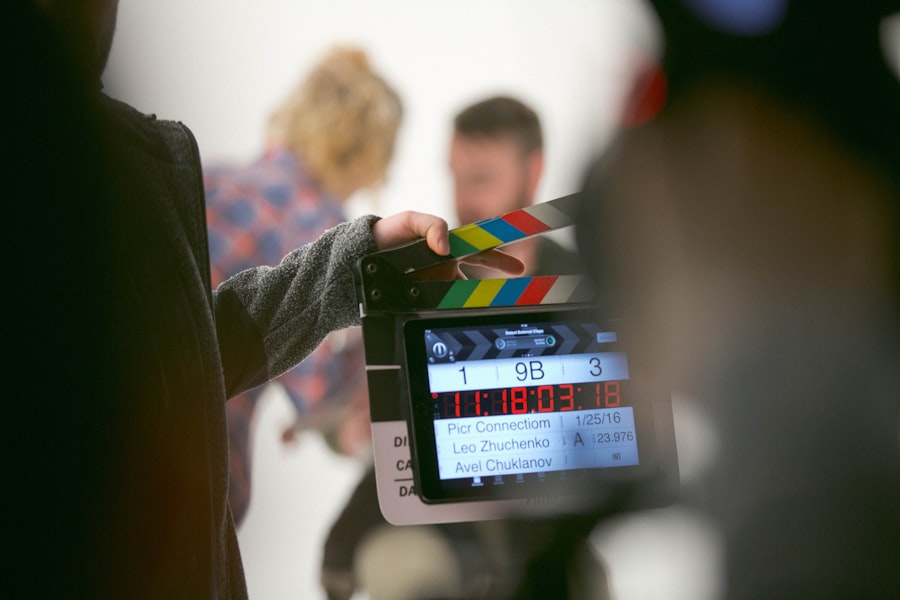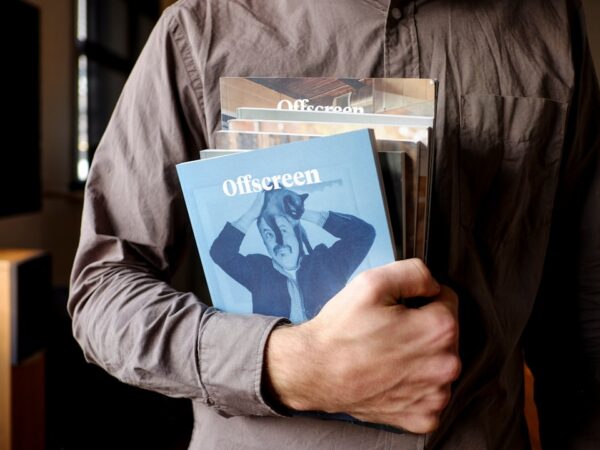
From Page to Screen: Books Turned Film
Book-to-film adaptations have become a staple in the entertainment industry, captivating audiences with their ability to bring beloved stories from the page to the big screen. These adaptations have the power to transport viewers into the world of their favorite books, allowing them to see their favorite characters come to life and experience the story in a whole new way. The importance of book-to-film adaptations cannot be understated, as they not only provide entertainment but also serve as a bridge between literature and cinema, bringing these two art forms together in a unique and powerful way.
Key Takeaways
- Filmmakers use the art of adaptation to bring books to life on screen.
- Adapting novels for film presents creative challenges that require a unique process.
- Book-to-film adaptations have evolved from classic novels to modern bestsellers.
- Screenwriters play a crucial role in adapting books for the big screen.
- Casting is important in bringing characters to life in book-to-film adaptations.
The Art of Adaptation: How Filmmakers Bring Books to Life on Screen
Adaptation is the process of taking a written work, such as a novel, and transforming it into a different medium, such as film. This process requires careful consideration and skill, as filmmakers must capture the essence of the original story while also making necessary changes to fit the constraints of the new medium. Staying true to the source material is crucial in order to satisfy fans of the book, but filmmakers also have the opportunity to add their own creative touches and interpretations to enhance the story.
The process of adapting a book for film involves several steps. First, the screenwriter must carefully read and analyze the source material, identifying key themes, characters, and plot points that should be included in the adaptation. They must then condense the story into a screenplay format, making decisions about which scenes to include and how to translate them visually. This can be a challenging task, as books often contain more detail and internal monologue than can be effectively portrayed on screen.
The Challenges of Adapting Novels for Film: A Look at the Creative Process
One of the biggest challenges in adapting novels for film is the inherent differences between these two mediums. Books allow for more internal exploration of characters’ thoughts and emotions, while films rely heavily on visual storytelling. Filmmakers must find creative ways to convey the same depth and complexity of the characters and story without relying solely on dialogue or voiceover narration.
Another challenge is condensing a book, which can span hundreds of pages, into a two-hour film. This requires making difficult decisions about what to include and what to leave out, as well as finding ways to streamline the story without losing its essence. Filmmakers must also consider pacing and structure, ensuring that the film flows smoothly and keeps the audience engaged from beginning to end.
Choosing the right scenes to include is another crucial aspect of the adaptation process. Filmmakers must prioritize the most important and impactful moments from the book, while also considering how these scenes will translate visually. Some scenes may need to be altered or combined in order to fit the constraints of the film medium, while others may need to be added or expanded upon to enhance the storytelling.
The Evolution of Book-to-Film Adaptations: From Classic Novels to Modern Bestsellers
| Book Title | Author | Year Published | Year Adapted to Film | Box Office Gross (in millions) |
|---|---|---|---|---|
| Pride and Prejudice | Jane Austen | 1813 | 1940 | 2.25 |
| To Kill a Mockingbird | Harper Lee | 1960 | 1962 | 13.13 |
| The Godfather | Mario Puzo | 1969 | 1972 | 246.1 |
| The Shining | Stephen King | 1977 | 1980 | 44.4 |
| The Hunger Games | Suzanne Collins | 2008 | 2012 | 694.4 |
Book-to-film adaptations have a long history, dating back to the early days of cinema. Classic novels such as “Pride and Prejudice,” “To Kill a Mockingbird,” and “Gone with the Wind” have been successfully adapted for the screen, captivating audiences for generations. These adaptations often stay true to the source material, preserving the original story and characters while bringing them to life in a new way.
In recent years, there has been a rise in adaptations of modern bestsellers. Books such as “Harry Potter,” “The Hunger Games,” and “Twilight” have become cultural phenomena, with millions of fans eagerly awaiting their big-screen adaptations. These adaptations have not only brought these stories to a wider audience but have also sparked renewed interest in reading and literature among young people.
The rise of technology has also had a significant impact on book-to-film adaptations. Advances in visual effects have allowed filmmakers to create stunning and immersive worlds, bringing fantastical elements to life in ways that were previously unimaginable. This has opened up new possibilities for adaptations, allowing filmmakers to push the boundaries of storytelling and create truly cinematic experiences.
The Role of Screenwriters in Adapting Books for the Big Screen
Screenwriters play a crucial role in the adaptation process, as they are responsible for translating the written word into a visual medium. A good screenplay is essential in capturing the essence of the original story while also making necessary changes to fit the constraints of film.
Adapting a book into a screenplay can be a challenging task, as it requires condensing a complex and detailed story into a format that can be effectively portrayed on screen. Screenwriters must carefully choose which scenes to include and how to translate them visually, while also maintaining the integrity of the original story. They must also consider pacing and structure, ensuring that the film flows smoothly and keeps the audience engaged.
The role of the screenwriter in the adaptation process is not just about translating the story from one medium to another, but also about adding their own creative touches and interpretations. They have the opportunity to enhance the story through visual storytelling, dialogue, and character development, bringing their own unique perspective to the adaptation.
The Importance of Casting: How Actors Bring Characters to Life in Book-to-Film Adaptations

Casting is a crucial aspect of book-to-film adaptations, as actors have the power to bring characters to life and make them resonate with audiences. Finding the right actor for each role is essential in capturing the essence of the character and staying true to the source material.
The challenges of casting for book-to-film adaptations are twofold. First, filmmakers must find actors who physically resemble the characters described in the book. This can be particularly challenging when dealing with iconic characters who have been imagined by readers for years. Second, they must find actors who can effectively portray the emotional depth and complexity of the characters, bringing them to life in a way that is true to the original story.
There have been many successful casting choices in book-to-film adaptations, where actors have become synonymous with their characters. Examples include Daniel Radcliffe as Harry Potter, Jennifer Lawrence as Katniss Everdeen, and Robert Pattinson as Edward Cullen. These actors not only physically resemble the characters but also bring their own unique interpretations and performances, making them memorable and beloved by fans.
The Impact of Visual Effects on Book-to-Film Adaptations: Enhancing the Storytelling Experience
Visual effects play a crucial role in book-to-film adaptations, as they have the power to enhance the storytelling experience and bring fantastical elements to life. From magical creatures to epic battle scenes, visual effects can transport audiences into the world of the story and make it feel more immersive and real.
Creating visual effects for adaptations can be a challenging task, as filmmakers must balance staying true to the source material with creating something visually stunning and innovative. They must also consider the limitations of technology and budget, ensuring that the visual effects are achievable within the constraints of the film production.
There have been many successful uses of visual effects in book-to-film adaptations. The “Harry Potter” series, for example, brought to life a wide range of magical creatures and spells through visual effects, creating a visually stunning and immersive world. The “Lord of the Rings” trilogy also utilized visual effects to create epic battle scenes and breathtaking landscapes, enhancing the storytelling and making it feel larger than life.
The Controversy of Making Changes to the Original Story: Balancing Creativity and Fidelity
One of the ongoing debates in book-to-film adaptations is the balance between fidelity to the source material and creative freedom. Some fans argue that adaptations should stay true to the original story, preserving the characters and plot as they were written. Others believe that adaptations should take creative liberties, adding new elements or making changes to enhance the storytelling.
Filmmakers must navigate this controversy carefully, as they must satisfy both fans of the book and general audiences. While staying true to the source material is important in order to preserve the integrity of the story, filmmakers also have the opportunity to add their own creative touches and interpretations, making the adaptation unique and engaging.
There have been many controversial changes made in book-to-film adaptations. Some changes have been met with backlash from fans, who feel that the changes deviate too far from the original story. However, there have also been instances where changes have been well-received, adding depth and complexity to the story or updating it for a modern audience.
Adapting Non-Fiction Books for Film: Challenges and Opportunities
While most book-to-film adaptations focus on fictional stories, there have also been successful adaptations of non-fiction books. Adapting non-fiction presents its own set of challenges and opportunities, as filmmakers must find creative ways to bring real-life events and characters to life on screen.
One of the challenges of adapting non-fiction books is condensing a complex and detailed story into a two-hour film. Filmmakers must carefully choose which events and characters to include, while also maintaining accuracy and integrity. They must also find ways to make the story visually engaging, as non-fiction books often rely heavily on facts and information.
However, adapting non-fiction also presents opportunities for creative storytelling. Filmmakers can use visual techniques, such as reenactments or archival footage, to bring historical events to life. They can also add their own interpretations and perspectives, providing a fresh take on well-known stories or shedding light on lesser-known events.
The Success of Book-to-Film Adaptations: Box Office Hits and Critical Acclaim
Book-to-film adaptations have been both box office hits and critical successes, captivating audiences and receiving acclaim from critics. Successful adaptations not only bring the story to a wider audience but also have the potential to impact the film industry and literature as a whole.
Examples of successful book-to-film adaptations include the “Harry Potter” series, which became one of the highest-grossing film franchises of all time, and “The Lord of the Rings” trilogy, which won multiple Academy Awards and received widespread critical acclaim. These adaptations not only satisfied fans of the books but also attracted new audiences and sparked renewed interest in reading.
The success of book-to-film adaptations is not just measured by box office numbers, but also by critical acclaim. Many adaptations have received praise for their faithful portrayal of the source material, as well as for their innovative storytelling and visual effects. These adaptations have not only entertained audiences but have also elevated the art of filmmaking and brought literature to a wider audience.
The Future of Book-to-Film Adaptations: What Lies Ahead for the Film Industry and Literature?
The future of book-to-film adaptations is promising, with new technologies and platforms opening up new possibilities for storytelling. Streaming services, such as Netflix and Amazon Prime, have become major players in the entertainment industry, producing their own original content and adapting popular books for their platforms.
The rise of streaming services has allowed for more diverse and innovative adaptations, as filmmakers are no longer constrained by the limitations of traditional film distribution. This has opened up opportunities for lesser-known books to be adapted and for new voices to be heard in the adaptation process.
There is also potential for new and innovative adaptations in the future. Virtual reality and augmented reality technologies have the potential to revolutionize storytelling, allowing audiences to immerse themselves in the world of a book like never before. These technologies could bring a whole new level of interactivity and engagement to book-to-film adaptations, creating a truly immersive and unique experience.
Book-to-film adaptations have become an integral part of the entertainment industry, bringing beloved stories from the page to the big screen and captivating audiences around the world. The art of adaptation requires careful consideration and skill, as filmmakers must balance staying true to the source material with adding their own creative touches and interpretations.
The challenges of adapting novels for film are numerous, from condensing a complex story into a two-hour film to choosing the right scenes to include. However, successful adaptations have the power to transport audiences into the world of the story and make it feel more immersive and real.
The future of book-to-film adaptations is promising, with new technologies and platforms opening up new possibilities for storytelling. As technology continues to advance and new voices emerge in the adaptation process, we can expect to see even more innovative and engaging adaptations in the years to come.
FAQs
What is the meaning of “books made into film”?
“Books made into film” refers to the process of adapting a written work, such as a novel or a memoir, into a movie or a television show.
Why are books often adapted into films?
Books are often adapted into films because they already have a built-in audience and a pre-existing story that can be translated into a visual medium. Additionally, successful books can be a lucrative source of material for the film industry.
What are some examples of books that have been made into successful films?
Some examples of books that have been successfully adapted into films include “The Lord of the Rings” trilogy, “Harry Potter” series, “The Hunger Games” trilogy, “The Fault in Our Stars,” “Gone Girl,” and “The Girl on the Train.”
Are all books suitable for adaptation into films?
No, not all books are suitable for adaptation into films. Some books may have complex narratives or themes that are difficult to translate into a visual medium, while others may not have a broad enough appeal to justify the cost of making a film.
What are some challenges that filmmakers face when adapting books into films?
Some challenges that filmmakers face when adapting books into films include condensing a lengthy story into a two-hour movie, staying true to the source material while also making changes to suit the medium, and pleasing both fans of the book and general audiences.



















Good day! Do you know if they make any plugins to help
with Search Engine Optimization? I’m trying to get my website to rank for some targeted keywords but I’m not seeing very good success.
If you know of any please share. Many thanks! You can read similar text here: Wool product
Can I educate myself electric guitar?